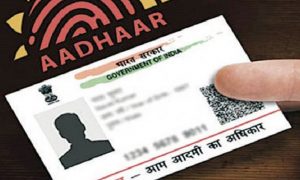In the ever-evolving landscape of cyber fraud, a new method has emerged that bypasses the need for OTP, CVV numbers, and even bank details. Fraudsters have devised a cunning strategy, leaving victims vulnerable to substantial financial losses.
Past incidents have shed light on the increasing prevalence of cyber criminals utilizing silicon fingerprints and biometric machines to gain unauthorized access to ATMs and other devices. By exploiting Aadhaar numbers and duplicating fingerprints, these fraudsters have managed to siphon off significant sums from unsuspecting individuals’ accounts. Let’s delve into a few such cases that highlight the magnitude of the deception.
Also Read– Unclaimed Deposits In Bank: How Nominee Or Heir Can Make A Claim
One notable case involves the mother of a renowned YouTuber, Pushpendra Singh. Startlingly, money was withdrawn from her account without the need for any two-factor authentication. Shockingly, the bank failed to send any alert messages, leaving the family unaware of the fraudulent activity until they discovered it while updating the passbook. This intricate fraud was carried out using Aadhaar-linked fingerprints.
A similar incident took place in Gurugram, Haryana earlier this year. By exploiting an individual’s fingerprints, money was illicitly withdrawn from their account. However, authorities were able to thwart the fraud by promptly locking the biometric information through the Aadhaar app. Another incident in 2022 further emphasized the audacity of such cyber crimes.
Also Read– Sebi Looking to Revamp Investor Grievance Redressal Process
The Aadhaar Enabled Payment Service (AePS) has become a favored tool for fraudsters, particularly in rural areas and towns. With a mere Aadhaar card and fingerprint, individuals can effortlessly withdraw funds without any additional information. According to the National Payments Corporation of India (NPCI), money can be withdrawn solely based on the Aadhaar number and fingerprint, with a service operator taking a commission for facilitating the transaction.
AePS not only enables withdrawals but also offers the functionality to deposit funds and check account details. It automatically activates when an account is linked to Aadhaar, eliminating the need for separate activation procedures.
Also Read– RBI to Withdraw Rs 2,000 Notes from Circulation; Will Continue to Remain Legal Tender
How do fraudsters manage to acquire biometric information? Despite the Unique Identification Authority of India (UIDAI) maintaining that Aadhaar data remains secure, cyber security expert Rakshit Tandon revealed that Aadhaar numbers are readily available in various formats, including photocopies and softcopies circulating on the internet. Cyber criminals also exploit AePS machines, utilizing silicon replicas to extract biometric data and facilitate fraudulent transactions.
To safeguard against such fraud, it is essential to keep your Aadhaar locked and unlock it only when necessary. By locking your Aadhaar, even if the data has been compromised, perpetrators will be unable to misuse your Aadhaar number. Additionally, using mask-based authentication can further fortify your defenses against potential scams.
Also Read- Petrol, diesel prices on May 20: What are the latest rates in your city?
As cyber fraud continues to evolve, vigilance and taking proactive measures become paramount in safeguarding ourselves from financial exploitation. Stay informed, stay protected.





































